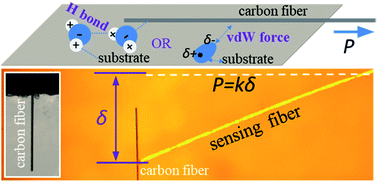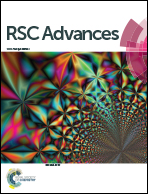Hydrogen bonding sewing interface†
Abstract
The strong force that originates from breaking covalent bonds can be easily quantified through various testing platforms, while weak interfacial sliding resistance (ISR), originating from hydrogen bonding or van der Waals (vdW) forces, is very challenging to measure. Facilitated by an in-house nanomechanical testing system, we are able to precisely quantify and clearly distinguish the interfacial interactions between individual carbon fibers and several substrates governed by either hydrogen bonding or vdW forces. The specific ISR of the interface dominated by vdW forces is 3.55 ± 0.50 μN mm−1 and it surprisingly increases to 157.86 ± 44.18 μN mm−1 if the interface is bridged by hydrogen bonding. The ad hoc studies demonstrate that hydrogen bonding rather than vdW forces has great potential in sewing the interface if both surfaces are supportive of the formation of hydrogen bonds. The findings will enlighten the engineering of interfacial interactions and further mediate the entire mechanical performance of structures.



 Please wait while we load your content...
Please wait while we load your content...